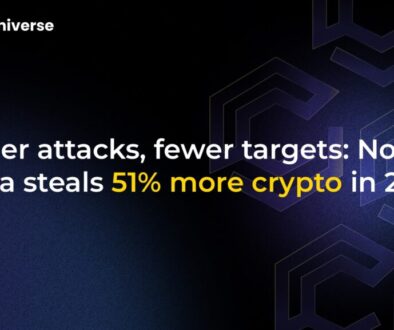Is Bitcoin Price Going to Crash Again?

Bitcoin’s Rollercoaster Ride: Correction or Crash Ahead?
Bitcoin (BTC) investors have been on edge recently. After a significant climb, the price saw a notable dip, falling below key psychological levels before staging a partial recovery. Currently hovering below significant resistance points like $85,000, the market is buzzing with a crucial question:
The Bear Case: Why Some Fear a Bitcoin Crash
Several factors are fueling concerns about a potential Bitcoin price downturn. Let’s explore the arguments suggesting caution is warranted:
Macroeconomic Headwinds and the Flight to Safety
Some analysts point to broader economic trends as potential risks for Bitcoin. The argument suggests that intensifying global trade tensions and recession fears could drive investors away from riskier assets like cryptocurrencies and towards traditional safe havens, primarily gold.
- Gold’s Surge: Gold has recently hit record highs, attracting significant capital. This rally is often interpreted as a sign of market anxiety.
- ETF Flows Divergence: Data shows a stark contrast in recent investment flows. While gold-backed ETFs have seen substantial inflows, spot Bitcoin ETFs have experienced significant outflows in the same period, potentially indicating shifting institutional sentiment.
- Mean Reversion Risk: Bloomberg’s Mike McGlone suggests risk assets like Bitcoin might revert towards their long-term averages. Bitcoin’s 200-week moving average, a historical support level during major corrections, currently sits significantly lower (around the mid-$40,000s) than recent prices.
However, it’s worth noting that some veteran traders caution against assuming gold’s rally is sustainable, suggesting it might be nearing a speculative peak, which could potentially reverse the flow back towards assets like Bitcoin.
On-Chain Data Flashing Warning Signs?
On-chain analysis provides insights into holder behavior, and recent data presents a mixed, potentially cautionary picture:
- Short-Term Holder Strain: Data from Glassnode indicates that Short-Term Holders (STHs) – those who bought BTC recently, often near the highs – are experiencing significant unrealized losses relative to the recent price drop. This pattern has been observed in the early stages of previous bear markets.
- Long-Term Holder Risk: While Long-Term Holders (LTHs) remain largely in profit, there’s a risk that as recent buyers mature into LTH status, more unrealized losses could shift to this cohort. Historically, significant loss absorption by LTHs has often preceded deeper market downturns.
While this data highlights increasing risk and warrants caution, it doesn’t yet confirm an imminent crash. It suggests vulnerability if the market remains weak for an extended period.
The Bull Case: Why Bitcoin Might Rally Instead
Despite the concerns, strong arguments support the view that Bitcoin remains in a bull market and the recent dip is a buying opportunity rather than the start of a crash.
Historical Patterns and Technical Models
Many analysts believe the current price action aligns with historical bull market corrections:
- Standard Corrections: Bitcoin bull markets are known for sharp pullbacks (20-40% or more). Some analysts see the recent dip as aligning with previous consolidation phases observed in this cycle (e.g., mid-2023, early 2024).
- PlanB’s Models: Pseudonymous analyst PlanB points to models like the Stock-to-Flow (S2F) and the 200-week moving average. The convergence of different moving average calculations, happening recently, has historically preceded significant price surges.
- Post-Halving Period: Bitcoin is currently in the historically bullish window following a halving event. Past cycles have shown this period often delivers substantial gains, although not without volatility.
On-Chain Strength and Supply Dynamics
Other on-chain metrics paint a more optimistic picture:
- Seller Exhaustion: Analysis suggests that with each recent price dip, the realized losses (actual selling at a loss) are decreasing. This indicates that fewer holders are willing to sell at current or lower prices, potentially signaling a bottoming process.
- Decreasing Exchange Supply: The amount of Bitcoin held on exchanges continues to hit new lows. This trend often precedes a “supply shock,” where reduced available supply meets steady or increasing demand, potentially leading to sharp price increases.
- M2 Money Supply Correlation: Some analyses show Bitcoin’s price potentially following global M2 money supply trends with a lag. If this correlation holds and M2 continues to grow, it could suggest new highs for Bitcoin later in the year.
Conclusion: Navigating the Uncertainty
So,
However, strong counterarguments exist based on historical bull market patterns, established technical models, signs of seller exhaustion, and shrinking supply on exchanges. Many analysts remain bullish, viewing the current phase as consolidation before the next major move upwards, potentially targeting levels above $100,000.
Ultimately, Bitcoin remains a volatile asset. While a crash isn’t confirmed and significant upside potential exists, the current environment highlights risks alongside opportunities. Investors should weigh the evidence, consider their risk tolerance, and stay informed as the market continues to evolve.


